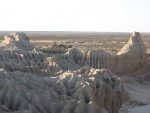This is a global week in HASS for primary students. Our youngest students are marking countries around the world where they have family members, slightly older students are examining the Mayan calendar, while older students get nearer to Australia, examining how people reached Australia and encountered its unique wildlife.
Foundation to Year 3

Foundation students doing the Me and My Global Family unit (F.1) are working with the world map this week, marking countries where they have family members with coloured sticky dots. Those doing the My Global Family unit (F.6), and students in Years 1 to 3 (Units 1.1; 2.1 and 3.1), are examining the Mayan calendar this week. The Mayan calendar is a good example of an alternative type of calendar, because it is made up of different parts, some of which do not track the seasons, and is cyclical, based on nested circles. The students learn about the 2 main calendars used by the Mayans – a secular and a celebratory sacred calendar, as well as how the Mayans divided time into circles running at different scales – from the day to the millennium and beyond. And no, in case anyone is still wondering – they did not predict the end of the world in 2012, merely the end of one particular long-range cycle, and hence, the beginning of a new one…
Years 3 to 6

Students doing the Exploring Climates unit (3.6), and those in Years 4 to 6 (Units 4.1, 5.1 and 6.1), are examining how people reached Australia during the Ice Age, and what Australia was like when they arrived. People had to cross at least 90 km of open sea to reach Australia, even during the height of the Ice Age, and this sea gap led to the relative isolation of animals in Australia from others in Asia. This phenomenon was first recorded by Alfred Wallace, who drew a line on a map marking the change in fauna. This line became known as the Wallace line, as a result. Students will also examine the archaeological evidence, and sites of the first people in Australia, ancestors of Aboriginal people. The range of sites across Australia, with increasingly early dates, amply demonstrate the depth of antiquity of Aboriginal knowledge and experience in Australia.


My grade 4 son played this with me a few times, his feedback was it was too easy but fun,…
Brad